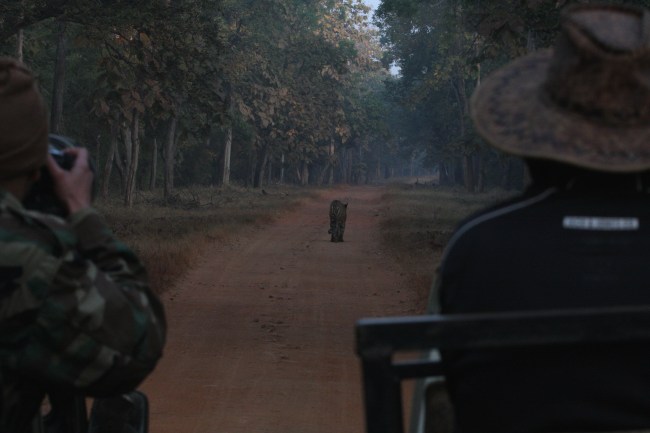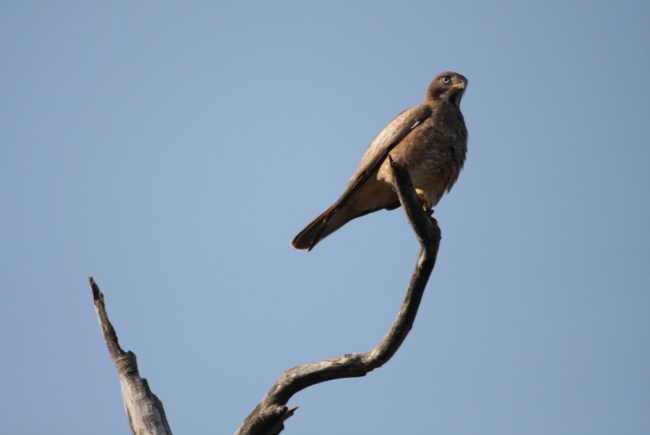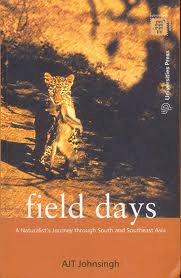Book review: Of Birds and Birdsong, by M. Krishnan
Edited by Shanthi and Ashish Chandola
Aleph Book Company, published 2012
I have alluded to this exceptional book in a previous post, and have been wanting to publish this review for many weeks now.
Once in a rare while, we come across a book that has rich topical value, but which can also be read simply for the elegance of its language. Of Birds and Birdsong is one such book (M.R. James’ Ghost Stories is another that readily comes to mind). If you possess a love for the English language, you’ll enjoy this book immensely even if the immediate topic – birds – is not of any great interest.
Madhavaiah Krishnan (1912-1996) was not just an ornithologist. He was a naturalist and photographer par excellence. For a man with so brilliant a mind he was a failure academically, and tried his hand at an astonishing variety of vocations (including implausibly, goat grazing). But he was a prolific writer and wrote a column for The Statesman which ran for an astounding forty six years, the last piece being published on the day of his death. He was also an artful photographer, producing masterful black and white images from the natural world using equipment he had rigged together himself and dubbed the Super Ponderosa. Krishnan served on the advisory committee of the BNHS, on the steering committee for Project Tiger, and on the Indian Board of Wildlife. He was awarded the Padma Shri in 1970.
This book brings together various pieces Krishnan wrote about birds, over the years. Some of the pieces are quaint given their vintage, like the ones on partridge and gamecock rearing, and pigeon post. Many others are short, straightforward profiles of certain species – the ones on the sarus crane, painted stork, grey junglefowl and changeable hawk eagle for instance. The more delightful ones are infused with personalized observations and anecdotes. There is an essay on the dangers of putting up nest-side hides, and on the precautions to be taken to prevent nest abandonment. There is another very short piece on the significance of the siesta in the animal and bird world. There are two entire sections devoted to pieces that deal with bird calls, and bird flight respectively.
As I have mentioned before, one cannot but help feel that Krishnan’s keen sense of observation was in a word, staggering. Wondering about the allusion to the sweet voice of the parakeet in Indian poetry while the call itself is a harsh screech in reality, Krishnan observed that the rose ringed parakeet has a “low, long, tremulous, ineffably sweet call” when summoning its young to the mouth of the nest-hole. Elsewhere, he painstakingly counted the number of times a hoopoe folded and unfolded its crest in the duration of a minute, and observed how the flicking of the crest expressed “the entire emotional range of the bird”. On yet another occasion he writes about trying to time the rapping beat of a woodpecker with a stopwatch.
The writing is often laced with a subtly wicked sense of humour. In the chapter on birds that can be seen on the “interminable perches” of telegraph wires by the railway tracks, he says what can be principally seen are birds that like to perch high and pounce. “However, it is wiser not to be to exact on such matters. I once saw an undoubted quail planted squarely on a passing telegraph wire. What business can any quail possibly have atop this unnatural perch? I do not know, but I am almost sure the quail did not either.”
In surmising why the white-browed wagtail is not as accomplished a singer as the magpie robin, Krishnan has a clever explanation. “It is all a matter of tails. If it could jerk its tail right over its head, and fan it out as the Magpie Robin does, no doubt it would sing as wildly and wonderfully, but being only a wagtail, it is content with its modest, sweet little song.”
I cannot look at white headed babblers now without this scintillating description coming to mind. “They go hopping along to some corner, and one bird turns a dead leaf over while its fellows look on with a critical slant of their white heads – then, suddenly, the party dissolves in hysterical squeaks, and whirrs across on weak wings to another corner of the compound, where they proceed at once to turn over dead leaves again. Clearly, the birds are daft, but they are a feature of Madras gardens (however nominal the garden) and will always be. By sheer esprit de corps and an inability to take life too seriously, they have prevailed where their betters have given up.”
Once every few pages, you are guaranteed to come across a word you’ve never heard of. Krishnan’s vocabulary was immense, and his love for finding the right word was deep. Whoever thought the grey wagtail’s belly was gamboge in colour? I was piqued by use of the word volplaning on multiple occasions and looked it up. Perhaps I’ve seen it used before, but I cannot recollect it.
Like any exceptionally good writer, Krishnan could be brilliantly evocative when he needed to. Sample this. “I remember spending a delightful hour beside the lake at Siruvani. The great, verdant trees and feathery clumps of bamboos on the shores mirrored in the still water to endow it with a dark, viridian calm. It was almost a scene of idyllic quiet, except that it was all too wildly beautiful to be idyllic, too like something out of a barbarian dream of paradise, and a barbarian that I am, it held me fascinated. Then an egret came flying round the corner, flying low over the water, dazzlingly white and clear against the profound umbers and greens of the reflected forest, each slow, rhythmic stroke of the wings duplicated in the mirror below. Halfway across, the bird stalled and hung in the air, the pinions of the forwardly directed wings splayed out with the braking action, the horn-black, yellow-footed legs dangling and almost touching their twin image on the lake’s surface, the head and neck stretched sinuously forward as it scrutinized something in the water below. For a moment then the stillness was perfect, and for that moment it was no dream but paradise in fact.”
Krishnan was a voracious reader and there are umpteen literary references and allusions scattered all through the book – Lockwood Kipling, William Blake, Richard Lovelace, et al. Moreover there are plenty of references from nature writers of his and earlier generations – men like Konrad Lorenz, Douglas Dewar, ‘Eha’, G.M. Henry, G.P. Sanderson and David Cunningham.
Literary aesthete aside, the book has a wealth of information on over a hundred species of birds from the subcontinent. Much of this is derived from painstaking personal observation over the years. And the anecdotal narrative makes it good fun to read, for most part.
In summation, I found this book breathtaking. If you are reading this blog, you probably have some sort of interest in the natural world and if you do, this book definitely belongs on your bookshelf.
There is a useful ‘notes’ section at the back of the book which among other things, gives the current names of many of the birds. I however felt that these alone could have been footnoted along with the text, for more convenient referencing rather than being placed separately and at the end. But this is admittedly a minor inconvenience.
















